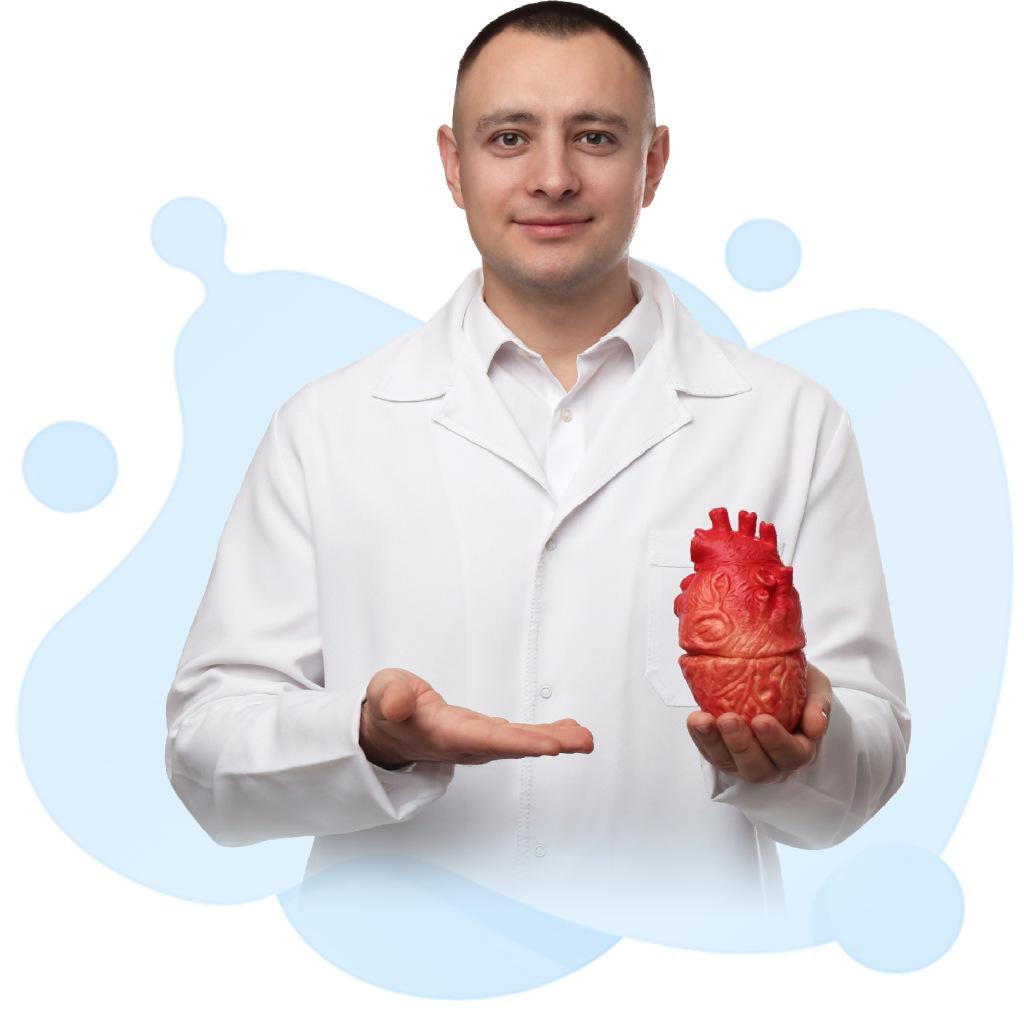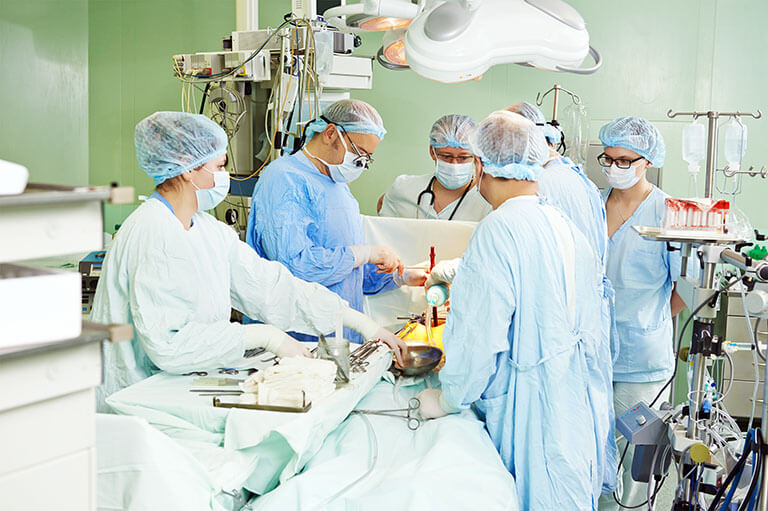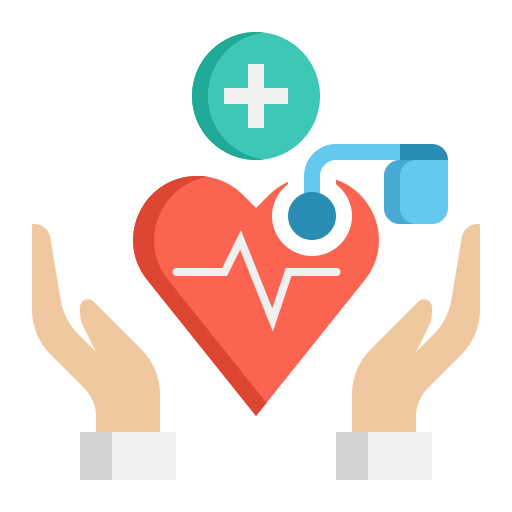Cardiac Surgery Certification 2025

The Cardiac Surgery Certification 2025 exam is a specialty certification that nurses can add to their credentials. This is a great way to increase your chances of getting a job in the field. However, you should know that the certification requires a significant time investment.
Nurses who want to take the CSC 2025 exam must have a current unencumbered nursing license. They also must have extensive experience in caring for cardiac surgery patients.
Free Cardiac Surgery Certification Practice Test Online
Cardiac Ablation Surgery
Cardiac ablation destroys abnormal heart tissue and can drastically reduce the risk of life-threatening heart arrhythmias, such as atrial fibrillation (AF). It is performed under local anaesthetic through a minimally invasive catheter procedure, or less commonly as part of an open-heart surgical operation. It can also be used to treat some cardiomyopathies – heart muscle diseases. There are two types of cardiac ablation: radiofrequency ablation and cryoablation.
In the first procedure, a health care team will clean and numb the blood vessel where they will insert the catheters. Then, they will insert a tube sheath into the blood vessel and thread one or more catheters through it. These catheters will be guided to the problem area in your heart by injecting dye into your blood vessels and following it on a live X-ray image called fluoroscopy.
Once the location of the abnormal heart tissue has been identified, the tip of the ablation catheter will emit a high-frequency electrical energy to destroy the tissue and create scars that prevent the abnormal electrical signal from starting. This fixes the short-circuit that triggers atrial fibrillation.
Cardiac Bypass Surgery
Coronary artery bypass surgery is a surgical procedure to improve blood flow to your heart. It’s also known as coronary artery bypass graft (CABG). It helps relieve chest pain from blockages in your arteries. The arteries supply your heart with oxygen and nutrients. They can become narrow or clogged with fatty deposits, which is called coronary artery disease. It can be painful and restrict your breathing, so you may need to take medicine.
In this surgery, a surgeon makes an incision between ribs and spreads your chest open. Then, he or she removes a piece of healthy blood vessel from inside the chest wall or your lower leg. The surgeon connects the ends of this graft below your blocked artery to make a new pathway for blood to flow around the blockage.
After your operation, you’ll need to follow a sensible lifestyle and exercise regularly. In addition, it’s important to stop smoking, and eat a balanced diet. You can also take medication to prevent clots from forming. You should also avoid fried foods and spices, which can increase your risk of having a heart attack.

Cardiac Clearance for Surgery
If you have a pre-surgical procedure that requires cardiac clearance, be sure to share your full medical history with your doctor. This will help them assess your risk of an intraoperative cardiac complication. They will also want to know whether you have had any heart-related issues with anesthesia or other procedures.
All patients who undergo surgery require a preoperative evaluation to determine their risk of a cardiovascular complication. The cardiologist will perform this evaluation by taking a detailed history and conducting a physical exam. The evaluation will include an EKG with interpretation, chest radiography, and other diagnostic tests as necessary.
The Cardiac Surgery Certification Exam is offered by the American Association of Critical-Care Nurses (AACN). It certifies specialty nurses who care for cardiac surgery patients. The CSC exam is administered at a Prometric testing center. To qualify, a candidate must have an unencumbered RN or APRN license and 1,750 hours of clinical nursing experience. In addition, a candidate must be a member of the AACN. A practice test is available to help prepare for the exam.
Cardiac Stent Surgery
Angioplasty and stenting can significantly improve the flow of blood through your coronary arteries, which supply the heart with oxygen-rich blood. These procedures are usually performed after other treatments, such as medications and lifestyle changes, have failed to help you. Your doctor will give you a local anaesthetic before starting the procedure. You will also be connected to a monitor and watched by a medical team. The doctor will insert a catheter with a balloon at its tip into a blood vessel in your arm or groin. Once they reach the narrowed or blocked artery, they will inflate the balloon and stretch the artery. The stent will then be left behind to help prevent the artery from becoming narrowed or blocked again.

A stent is a mesh tube that helps keep an artery open. It is used when fatty deposits in the coronary artery restrict or block blood flow to your heart. The procedure is very quick, painless, and effective in most cases. However, it isn’t right for everyone. You may need to undergo coronary artery bypass surgery instead.
Cardiac Surgery Salary
As a cardiac surgery nurse, you will be responsible for monitoring patients in intensive care following surgery. This can include complications such as arrhythmias, post-operative bleeding, stroke, pleural effusion (fluid around the lungs), wound infection and thrombosis. You will also be involved in multidisciplinary team meetings and ward rounds. In addition to these duties, you will be required to attend outpatient clinics on a regular basis.
According to the latest salary data, cardiac surgeons in the United States earn a median annual salary of $213,000 based on location. Surgeons in New York are paid the highest salaries, followed by professionals in Los Angeles and Houston. Surgeons based in Nevada are paid $149,000 on average, while those based in Arizona and New Mexico make $153,000 on average.
The AACN Cardiac Surgery Subspecialty Certification exam is offered year-round at computer-based testing centers in the United States. The exam is designed to test nursing skills and knowledge related to the care of cardiac surgery patients. It is administered by the American Association of Critical-Care Nurses and is valid for three years.

Journal of Cardiac Surgery
Cardiac surgery is a highly technical and complex medical procedure that includes the repair or replacement of the heart and blood vessels that carry blood to and from the heart. It treats a wide variety of cardiac conditions including congenital and acquired diseases, and is performed in patients with a range of ages and health problems. The most common types of cardiac surgical procedures include coronary artery bypass grafting, mechanical ventilation, and the insertion of pacemakers and defibrillators.
In the United States, RNs and ARNPs who care for cardiac surgery patients can earn certification by passing the CSC exam. This is a difficult exam and requires a great deal of practice to pass. Fortunately, there are many review options available to help prepare for the test.
One option is to attend a comprehensive review course, such as the AACN’s CSC Exam Flashcard Bundle. This bundle includes 180 practice questions, rationales, and reviews written in an outline format that follows the exam blueprint precisely. The question bank was created by a team of experts from various cardiothoracic surgery departments, who collectively brainstormed pertinent clinical situations and topics.
Minimally Invasive Cardiac Surgery
The Cardiac Surgery Certification exam is a subspecialty exam offered by the American Association of Critical-Care Nurses (AACN). This subspecialty exam certifies nurses that work with cardiac surgery patients. The exam centers around the potential problems that can arise with patients in post-operation and how to solve them. RNs and APRNs who wish to take the exam must have a current unencumbered nursing license in the United States.
Minimally invasive cardiac surgeries are performed through one or more small incisions in the chest, rather than the traditional 12 to 14-inch incision used in open heart surgery. These procedures require less blood loss and result in fewer complications. They also lead to faster recovery times than conventional open-heart surgery.
The AACN Cardiac Surgery Subspecialty Certification exam is administered year-round at computer-based testing centers across the United States. To take the CSC, you must be a registered nurse with a current, unencumbered RN or APRN license and have at least 1,750 hours of clinical nursing experience. This includes a minimum of 144 of these hours in the last year.
Pediatric Cardiac Surgery
Whether your child has a heart problem that needs to be fixed or he or she is at risk of developing a heart disease, pediatric cardiac surgery can help. Depending on the condition, your child’s pediatric heart surgeon will recommend different treatments. For example, some congenital heart defects can be repaired with a single operation performed in early infancy. Others require additional procedures and follow-up care.
Cardiac rehabilitation: During their recovery, pediatric patients work with physical and occupational therapists who provide specialized training to improve strength, endurance, balance and mobility. They also focus on cardiovascular and respiratory recovery. Using a playful environment, they encourage kids to move and use their minds.
The AACN Cardiac Surgery Subspecialty Certification (CSC) exam is designed for certified nurses who work in areas such as the CCU, combined ICU/CCU, medical ICU, telemetry, progressive care and heart failure clinics/home care. The exam is administered through the AACN, which is a professional organization dedicated to promoting high standards of nursing practice. To take the CSC exam, RNs and ARNPs must have a current, unencumbered US RN or APRN license and at least 1,750 hours of clinical experience.
Cardiac Surgery Certification Exam Questions and Answers
In a non-surgical treatment known as catheter ablation, tiny, flexible tubes known as catheters are used to enter the heart. A general anesthesia or stopping the heart are not necessary. In major centers, this method is applied more frequently using more recent technology.
Cardiovascular catheterization, often known as cardiac cath, is a non-surgical treatment that enables medical professionals to identify and treat conditions affecting the heart’s muscle, valves, or coronary (heart) arteries.
Cardiovascular surgery, another name for cardiac surgery, is a specialist area of surgery with a focus on treating illnesses and diseases that affect the heart and blood vessels. It entails operations on the heart, arteries, veins, and other connected systems.
Since there won’t be a significant incision made, cardiac catheterization is not regarded as a surgical operation. Additionally, compared to surgery, recuperation time is substantially quicker. Depending on the outcome of your operation, in certain situations, your doctor may advise surgery.
The full ablation operation, including the time required to set up for the treatment and remove the catheters from the body, takes 3 to 4 hours to complete.
A less invasive procedure called catheter ablation is designed to treat atrial fibrillation without significant surgery.
The typical yearly compensation for a chief of cardiac surgery in the United States might range from around $400,000 to $800,000 or more, according to the information that is currently available. It’s crucial to keep in mind that these numbers are approximations and may vary widely depending on the before listed circumstances.
Catheter ablation cost from $16,278 to $21,294 with a cost of $1,597 to $2,132 each year. Medical therapy cost between $4,176 and $5,060 per year. At 3.2–8.4 years of follow-up, the costs of continued medical treatment and catheter ablation for PAF were comparable.
Depending on the state of the patient and the underlying cause of the treatment, cardiac ablation can be either an elective surgery or a non-elective surgery.
Atrial fibrillation is intended to be cured via surgical ablation, sometimes referred to as Cox-maze surgery or maze surgery (A-fib). It is a type of open-heart surgery frequently carried out concurrently with procedures for other cardiac issues, such as valve replacement or heart bypass.
Cardiac stent placement is considered a minimally invasive procedure rather than traditional open-heart surgery. It involves the insertion of a small metal or mesh tube, known as a stent, into a narrowed or blocked coronary artery to restore blood flow to the heart muscle.
No, cardiac surgery is not a dying field. In fact, cardiac surgery continues to play a crucial role in the treatment of various cardiovascular conditions and remains an essential discipline within the field of medicine.
After cardiac surgery, tamponade and bleeding are two prominent causes of cardiac arrest. Patients with these disorders suffer from dangerously insufficient cerebral perfusion in the absence of urgent resternotomy.
Nothing about the maze technique is shortened. During a cardiac maze operation, you develop a maze-like pattern of scar tissue on your heart.
A month before your operation, your Cardiology Now cardiologist will normally do a heart health exam called cardiac preoperative clearance. The timetable is flexible at Cardiology Now since you receive same-day results.
The aorta is cross-clamped during the first five beats of the heart’s initial contractions.
An EKG, which measures the electrical activity of your heart, is the primary test used to determine preoperative cardiac clearance. Further testing can be necessary if you are undergoing heart surgery or if your EKG results are unclear.
Minimally invasive cardiac surgery refers to surgical procedures performed on the heart using small incisions or access points, specialized instruments, and video-assisted techniques. The goal is to achieve the same therapeutic benefits as traditional open-heart surgery while minimizing the trauma to the patient’s body, reducing postoperative pain, speeding up recovery, and improving cosmetic outcomes.
MINS is characterized as myocardial ischemia-induced damage that takes place within 30 days following surgery.
An surgery known as the Glenn (or bidirectional Glenn) technique is used to enhance blood flow through a heart with a tiny left or right side (either the valve that connects the upper chamber to the lower chamber or the pumping chamber itself).
Following cardiac surgery, phrenic nerve damage is a well-known clinical phenomenon [1–5].
Your cardiologist will advise starting an outpatient cardiac rehabilitation program three to six weeks after you are released from the hospital. Your cardiologist will arrange an exercise tolerance test before you start cardiac rehabilitation (ETT).
The saphenous vein is the conduit utilized for coronary artery bypass grafting the most frequently.
For instance, those with diabetes or hypertension frequently require clearance. These ailments might raise the chance of cardiovascular problems after surgery. You can also require approval if you smoke. Clearance may also be required due to poor physical health.
Peroperative hemodynamic instability may arise with continued usage. up to the day of surgery if you have high blood pressure. cease on the day of surgery, especially if your baseline blood pressure is low, if you have heart failure.
Get the test preparation assistance you need to pass the CSC exam. Because of how difficult the Cardiac Surgery Certification Exam is, rigorous exam preparation is crucial for success. The CSC Exam Secrets Study Guide is the best CSC Exam preparation tool available.
The surgeon cuts off a portion of a healthy blood artery, frequently from the lower thigh or the chest wall. Graft is the name given to this section of healthy tissue. Below the obstructed cardiac artery, the surgeon sutures the graft’s ends together. By doing this, blood is given a new route to get through a barrier.
The procedure for a cardiac bypass usually lasts three and a half hours. The standard heart surgery method requires the surgeon to cut through the breastbone in order to gain access to the heart.
It takes between 30 and 60 minutes to complete the cardiac catheterization procedure. Although sedatives will be given to you, you will remain conscious throughout the process. The doctor will first place an intravenous (IV) line into a blood artery in your neck or groin.
The following sections provide more information about the six-year Cardiothoracic Surgery residency program.
Nearly 500,000 open heart operations are carried out year in the modern world. It is typically employed for difficult procedures like coronary artery bypass surgery, as well as difficult treatments on the aorta or the heart itself. In most cases, these treatments need a week or longer in the hospital and a protracted healing period.
If you make it through a cardiac arrest, you’ll be sent to a hospital for care. You could require more medications, treatments, or surgery, depending on what led to your cardiac arrest. A tiny device known as an implanted cardioverter-defibrillator (ICD) may be inserted under your skin close to your chest.
There are several types of cardiac surgery, each targeting specific heart conditions or diseases. Some of the commonly performed types of cardiac surgery include:
- Coronary Artery Bypass Grafting (CABG)
- Valve Repair or Replacement
- Aortic Aneurysm Repair
- Congenital Heart Defect Repair
- Heart Transplantation
- Mechanical Circulatory Support
- Arrhythmia Surgery
Usually, this is an outpatient surgery. The majority of patients stay in the hospital overnight due to the fact that a person recovering from catheter ablation will need to keep their legs straight for 6 to 8 hours following the procedure before they may get out of bed.
Children who require heart surgery have their congenital (present at birth) and acquired (acquired after birth) cardiac abnormalities repaired. The child’s health requires the procedure.
You can notice a few minor side effects in the days following the surgery, such as an achy chest, pain, or bruising where the catheter was put. Also possible are skipped heartbeats or unsteady cardiac rhythms. In a few days, most people are able to resume their regular activities.
Due to the accuracy of the incision, which enables quick healing and less scarring, obsidian blades are now most frequently employed in heart and ocular surgery.